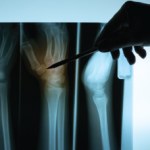“Right now we have about a 70% care gap in terms of folks that have fractures,” says Mr. Lee. “Only about 30% are getting screened for bone disease and treated when appropriate. We know that without intervention, many of these will have bones broken over and over. This should help us connect the dots in the community between bone breaks and the potential for osteoporotic disease.”
Research on Prevention & Clinical Questions
Another undertaking is the Secondary Fracture Prevention Initiative. It is part of NBHA’s 20/20 vision to reduce bone breaks 20% by the year 2020. To meet this goal, the Alliance is pursuing widespread implementation of a Fracture Liaison Service (FLS) post-fracture care coordination model in a number of healthcare settings, including Medicare, managed care, large hospitals systems and private payers.
Research is also being undertaken. The Bone Turnover Marker Standardization Initiative notes that bone turnover markers (BTMs) have been recognized as useful tools in clinical practice. However, short‐ and long‐term fluctuations related to biology and technical variability have limited their clinical use to date.
This is an attempt to build on the recommendations of the International Osteoporosis Foundation (IOF)/International Federation of Clinical Chemistry and Laboratory Medicine (IFCC) Bone Marker Standards Working Group position paper published in 2010 in Osteoporosis International. This looked at the use and utility of bone turnover markers in clinical practice.
Groups are working on projects to determine the reproducibility of current markers, to establish population normal reference ranges for biomarkers across different machines and laboratories, and the Patient Sample Collection Procedure Standardization Project that seeks to derive a standardized sample handling procedure, from careful examination of existing data, as the foundation for all BTM measurements.

Dr. Saag
In the area of treatment, the NBHA is working on research into medication administration. The Drug Holiday Study is looking into the use of biomarkers to help clinicians determine how best to place their patients on a drug holiday. It seeks to determine the utility of using biochemical markers to establish the effect a drug holiday has on bone turnover for patients on continuous bisphosphonate therapy for five years or more.
They hope to expand on a publication from the FDA that suggested, for many individuals, a holiday from bisphosphonates might be considered after four or five years of continuous use. However, in that publication there was little guidance on how clinicians should proceed. This research may help give clinicians more actionable information on this subject.

